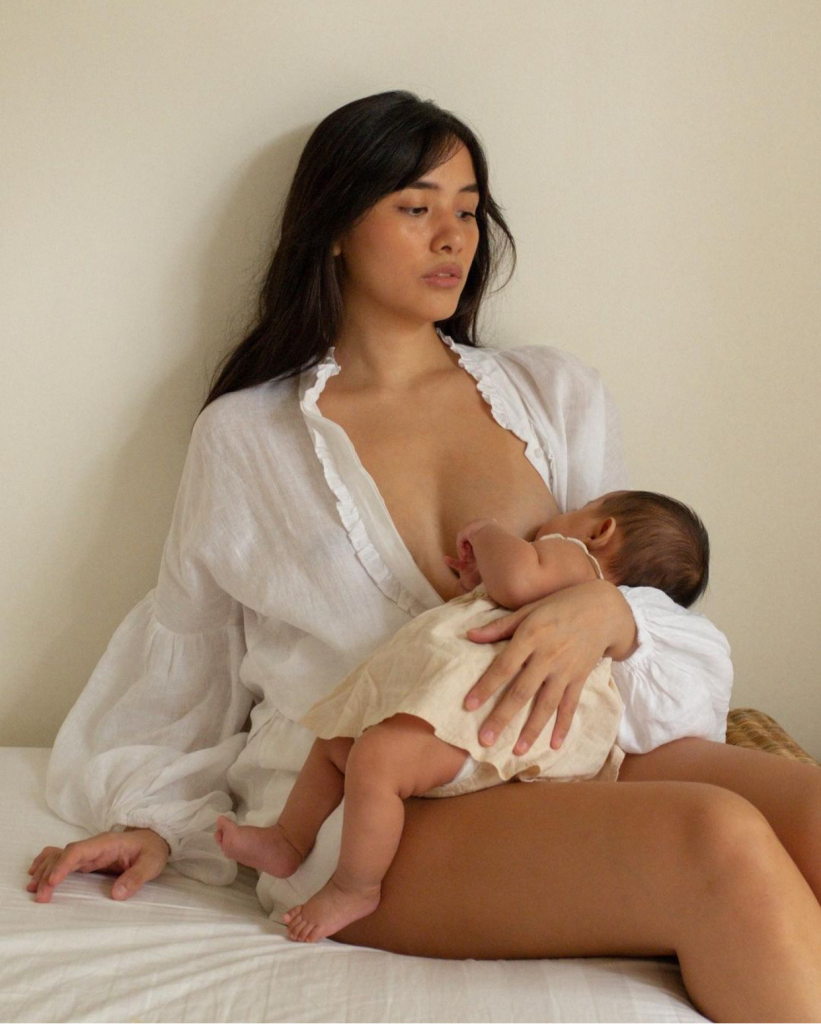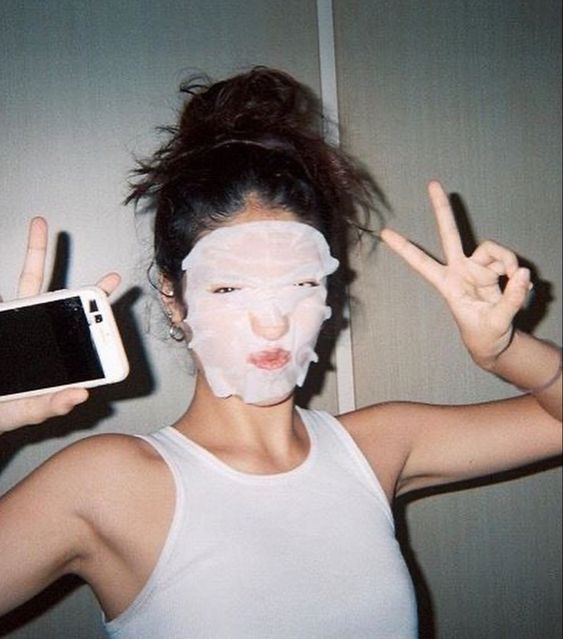Skincare 101: Which ingredients to avoid when you’re breastfeeding
Skincare no-gos

Fun fact: When it comes to motherhood, what goes on your body is just as important as what goes in. Ahead, find out how to keep your skincare routine baby-friendly while breastfeeding.
Being a new mum is hard. Not only is your body going through a multitude of changes, but you now also have an infant latched onto your chest every two to four hours. To make matters worse, you’re also perpetually sleep-deprived and your skin is in shambles! In the little downtime you get, all you want is to slather your skin in cushiony goodness—to blanket it in a cocktail of brightening, tightening, and glow-giving bliss.
There’s just one issue—now that you’re breastfeeding, your skincare routine needs a total overhaul. Why? We spoke to Dr Hwang Yee Chern, the Consultant Paediatrician at Island Hospital Penang, to glean her expertise on the matter. Ahead, she explains why the skincare you use during and after pregnancy is important. Further, she also rounds up the seven topicals to avoid while breastfeeding—from trendy retinol to acne-busting salicylic acid and more—as well as the ingredients to embrace in your post-partum glow. Find the full breakdown ahead.
So… what does skincare have to do with breastfeeding?

According to Dr Hwang, your skin is porous. Essentially, this means that whatever you apply topically can then be absorbed by your skin and make its way into your body’s circulation via the blood vessels in the deeper layers of the skin. “In fact, many lotions and cosmetics are engineered to work their way through layers of skin,” she elaborates.
In the case of breastfeeding mothers in particular, substances applied to the chest area can then be absorbed into the skin, through the mother’s blood and into her breast milk (breast milk is made by drawing nutrients from the bloodstream). Applying topical substances that aren’t suitable for babies can therefore pose a health risk. As Dr Hwang puts it, “During breastfeeding, potentially toxic substances can pass from the skin through the mother’s blood to her breast milk and cause harm to babies’ developing organs, especially the brain and liver.”
Before you panic about your body creams, however, Dr Hwang assures that any absorption of ingredients through this route is negligible thanks to the presence of the Blood-Milk Barrier which prevents unwanted substances and toxins from being transferred to the breast milk.
That said, there is still reason to be wary of your skincare. “As the baby is usually in close proximity and has skin-to-skin contact with the mother during breastfeeding, any skincare products on the mother’s skin have a high chance of being accidentally imbibed by the baby, especially if the skin products are applied around the chest area,” Dr Hwang says. “You also should keep in mind that any product you apply to your skin—especially near your neck, chest, and stomach area—can get on your baby’s skin while you hold them.
What are the skincare ingredients to avoid while breastfeeding?

Ingredient #1: Vitamin A-derivative products (retinol, retinoids and more)
Retinols are one of the hottest skincare ingredients on the market at the moment. Sold over-the-counter in the form of retinol and via prescription in the form of topical tretinoin or oral isotretinoin, the ingredient has a huge range of benefits, from tackling the signs of premature ageing like hyperpigmentation or wrinkles to treating moderate to severe acne. However, they’re definitely not safe for children.
“The use of retinols during pregnancy has been found to cause birth defects such as growth delay, excess fluid around the brain (hydrocephalus), abnormally small head size (microcephaly) and cleft palate,” says Dr Hwang. As such, it’s probably a good idea to avoid using it during breastfeeding too. Don’t worry—your baby is too young to worry about fine lines just yet!
READ: Non-irritating retinol and retinoid treatments to shop for clearer, more youthful skin
Ingredient #2: Salicylic acid/Beta Hydroxy Acid (BHA)
Typically used for the treatment of acne, salicylic acid has antibacterial, anti-comedogenic (read: it doesn’t block or clog pores), and keratolytic (read: addresses shedding dead skin) effects on the skin. While that’s great for tackling blackheads and breakouts, it’s not so great for your baby’s digestive system.
“Excessive use during pregnancy can cause antepartum and postpartum bleeding, prolonged pregnancy and labour in the mother,” explains Dr Hwang. “In babies, it can cause the premature closure of the ductus arteriosus (read: a blood vessel that connects two major arteries before birth and typically closes after birth) and can result in pulmonary hypertension, which if left untreated, can result in fetal death.”
“Because it is unlikely to be appreciably absorbed or appear in breastmilk, it is considered relatively safe to use during breastfeeding. That said, you should avoid application to areas of the body that might come in direct contact with the infant’s skin, or where the drug might be ingested by the infant via licking,” warns Dr Hwang. “The general rule of thumb is to keep the concentration at two per cent or below and to avoid any leave-on treatments.”
That said, if you’re still concerned, Dr Hwang adds that there are safer alternatives to use while breastfeeding such as azelaic acid, glycolic acid and lactic acid.
Ingredient #3: Hydroquinone
This is a cream that is typically used to address dark spots on the skin. Now, the effects of topical hydroquinone have not been extensively studied during breastfeeding, but we still wouldn’t recommend it. “Some experts feel that the use of hydroquinone is difficult to justify in a nursing mother as the absorption of the ingredient is high,” Dr Hwang clarifies. “If hydroquinone is used while breastfeeding, ensure that the infant’s skin does not come into direct contact with the areas of maternal skin that have been treated and that the infant does not ingest the product from the mother’s skin.”
Ingredient #4: Parabens
Parabens have gotten a bad rep with the clean beauty movement, but they do have a place in skincare. They’re usually used as preservatives, working to prevent and reduce the growth of harmful bacteria and mould in your beauty products, thus increasing the shelf life of the product. That said, you may want to avoid them while pregnant or breastfeeding. “Some scientific studies suggest that parabens can disrupt hormones in the body and harm fertility and reproductive organs, affect birth outcomes, and even increase the risk of cancer,” says Dr Hwang. ”Even though the toxin level that is transferred through parabens is quite low, it is wise to avoid it during pregnancy and while breastfeeding.”
Ingredient #5: Formaldehyde
Formaldehyde has many uses across a range of industries, but in beauty, it’s typically used as a preservative in cosmetics. That said, it’s never added into cosmetics in its pure form—rather, products are formulated with formaldehyde releasers like DMDM hydantoin, methylene glycol, quaternium-15, and 3-dioxane to limit the amount of formaldehyde in the beauty product at any time. That said, it’s a good idea to avoid using formaldehyde while breastfeeding. According to Dr Hwang, the ingredient is linked to respiratory problems in children, with an increased chance of getting chest infections like bronchitis and pneumonia as well as cancer formation.
Ingredient #6: Mercury
The use of mercury in cosmetic products is prohibited, but on the illegal market, it has been known to be found in skin whitening products. This is one ingredient that should be avoided at all costs—Dr Hwang warns that “it is harmful to your health, causing damage to the kidneys and nervous system, and it can also interfere with the brain development of young children or foetus. In addition, it can also cause rashes and irritation on the skin.”
So… what can I use while breastfeeding?

“Other moisturising ingredients that are safe for breastfeeding parents to use include glycerin, shea butter, and jojoba oil. Most commercially produced moisturisers and cleansers are safe to use while breastfeeding,” assures Dr Hwang.
“However, because postpartum hormones can make your skin more sensitive and irritated, it’s best to stick to gentle moisturisers and cleaners,” she adds. “It is prudent to choose gentle, fragrance-free products because they are bland and do not irritate the postpartum skin. Unnecessary chemicals or fragrances in cosmetic products, including cleansers, moisturisers, toners, and serums, should be avoided.”
For more beauty reads, click here.
| SHARE THE STORY | |
| Explore More |



